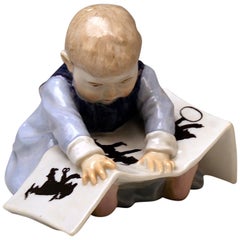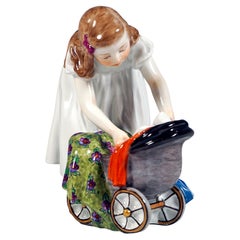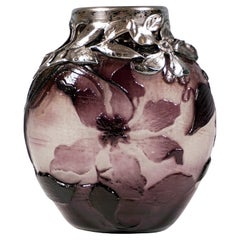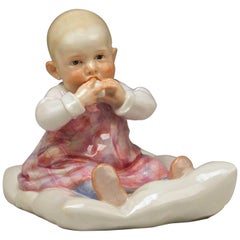Meissen Hentschel
Antique Early 1900s German Art Nouveau Porcelain
Porcelain
Antique Early 1900s German Art Nouveau Porcelain
Porcelain
Antique Early 1900s German Art Nouveau Porcelain
Porcelain
Antique Early 1900s German Art Nouveau Porcelain
Porcelain
Early 20th Century German Porcelain
Porcelain
Antique Early 1900s German Art Nouveau Porcelain
Porcelain
People Also Browsed
Antique 1890s French Art Nouveau Glass
Glass
Antique 1890s German Dinner Plates
Porcelain
Antique 1870s German Rococo Porcelain
Porcelain
Mid-20th Century German Biedermeier Porcelain
Porcelain
Vintage 1910s German Art Nouveau Porcelain
Porcelain
Antique Mid-19th Century German Rococo Porcelain
Porcelain
Antique 1870s German Rococo Porcelain
Porcelain
Antique 1870s German Rococo Porcelain
Porcelain
Antique Mid-18th Century German Rococo Porcelain
Porcelain
Vintage 1910s German Art Nouveau Figurative Sculptures
Porcelain
Mid-20th Century German Biedermeier Porcelain
Porcelain
Antique Mid-19th Century German Baroque Porcelain
Porcelain
Antique 1850s German Rococo Porcelain
Porcelain
Antique 1870s German Rococo Porcelain
Porcelain
Antique 1870s German Rococo Porcelain
Porcelain
Early 20th Century German Neoclassical Figurative Sculptures
Porcelain
Recent Sales
Antique Early 1900s German Art Nouveau Porcelain
Porcelain
Early 20th Century German Art Nouveau Porcelain
Porcelain
Antique Early 1900s German Art Nouveau Porcelain
Porcelain
Vintage 1920s German Art Nouveau Porcelain
Porcelain
Antique Early 1900s German Art Nouveau Porcelain
Porcelain
Vintage 1910s German Art Nouveau Porcelain
Porcelain
Antique Early 1900s German Art Nouveau Porcelain
Porcelain
Late 20th Century German Art Nouveau Porcelain
Porcelain
Antique Early 1900s German Art Nouveau Porcelain
Porcelain
Antique Early 1900s German Art Nouveau Porcelain
Porcelain
Antique Early 1900s German Art Nouveau Porcelain
Porcelain
Vintage 1930s German Art Nouveau Porcelain
Porcelain
Antique Early 1900s German Art Nouveau Porcelain
Porcelain
Early 20th Century German Porcelain
Porcelain
Antique Early 1900s German Art Nouveau Porcelain
Porcelain
Antique Early 1900s German Art Nouveau Porcelain
Porcelain
Early 20th Century German Art Nouveau Porcelain
Porcelain
Meissen Hentschel For Sale on 1stDibs
How Much is a Meissen Hentschel?
A Close Look at art-nouveau Furniture
In its sinuous lines and flamboyant curves inspired by the natural world, antique Art Nouveau furniture reflects a desire for freedom from the stuffy social and artistic strictures of the Victorian era. The Art Nouveau movement developed in the decorative arts in France and Britain in the early 1880s and quickly became a dominant aesthetic style in Western Europe and the United States.
ORIGINS OF ART NOUVEAU FURNITURE DESIGN
- Emerged during the late 19th century
- Popularity of this modernizing style declined in the early 20th century
- Originated in France and Britain but variants materialized elsewhere
- Informed by Rococo, Pre-Raphaelite art, Japanese art (and Japonisme), Arts and Crafts; influenced modernism, Bauhaus
CHARACTERISTICS OF ART NOUVEAU FURNITURE DESIGN
- Sinuous, organic and flowing lines
- Forms that mimic flowers and plant life
- Decorative inlays and ornate carvings of natural-world motifs such as insects and animals
- Use of hardwoods such as oak, mahogany and rosewood
ART NOUVEAU FURNITURE DESIGNERS TO KNOW
ANTIQUE ART NOUVEAU FURNITURE ON 1STDIBS
Art Nouveau — which spanned furniture, architecture, jewelry and graphic design — can be easily identified by its lush, flowing forms suggested by flowers and plants, as well as the lissome tendrils of sea life. Although Art Deco and Art Nouveau were both in the forefront of turn-of-the-20th-century design, they are very different styles — Art Deco is marked by bold, geometric shapes while Art Nouveau incorporates dreamlike, floral motifs. The latter’s signature motif is the "whiplash" curve — a deep, narrow, dynamic parabola that appears as an element in everything from chair arms to cabinetry and mirror frames.
The visual vocabulary of Art Nouveau was particularly influenced by the soft colors and abstract images of nature seen in Japanese art prints, which arrived in large numbers in the West after open trade was forced upon Japan in the 1860s. Impressionist artists were moved by the artistic tradition of Japanese woodblock printmaking, and Japonisme — a term used to describe the appetite for Japanese art and culture in Europe at the time — greatly informed Art Nouveau.
The Art Nouveau style quickly reached a wide audience in Europe via advertising posters, book covers, illustrations and other work by such artists as Aubrey Beardsley, Henri de Toulouse-Lautrec and Alphonse Mucha. While all Art Nouveau designs share common formal elements, different countries and regions produced their own variants.
In Scotland, the architect Charles Rennie Mackintosh developed a singular, restrained look based on scale rather than ornament; a style best known from his narrow chairs with exceedingly tall backs, designed for Glasgow tea rooms. Meanwhile in France, Hector Guimard — whose iconic 1896 entry arches for the Paris Metro are still in use — and Louis Majorelle produced chairs, desks, bed frames and cabinets with sweeping lines and rich veneers.
The Art Nouveau movement was known as Jugendstil ("Youth Style") in Germany, and in Austria the designers of the Vienna Secession group — notably Koloman Moser, Josef Hoffmann and Joseph Maria Olbrich — produced a relatively austere iteration of the Art Nouveau style, which mixed curving and geometric elements.
Art Nouveau revitalized all of the applied arts. Ceramists such as Ernest Chaplet and Edmond Lachenal created new forms covered in novel and rediscovered glazes that produced thick, foam-like finishes. Bold vases, bowls and lighting designs in acid-etched and marquetry cameo glass by Émile Gallé and the Daum Freres appeared in France, while in New York the glass workshop-cum-laboratory of Louis Comfort Tiffany — the core of what eventually became a multimedia decorative-arts manufactory called Tiffany Studios — brought out buoyant pieces in opalescent favrile glass.
Jewelry design was revolutionized, as settings, for the first time, were emphasized as much as, or more than, gemstones. A favorite Art Nouveau jewelry motif was insects (think of Tiffany, in his famed Dragonflies glass lampshade).
Like a mayfly, Art Nouveau was short-lived. The sensuous, languorous style fell out of favor early in the 20th century, deemed perhaps too light and insubstantial for European tastes in the aftermath of World War I. But as the designs on 1stDibs demonstrate, Art Nouveau retains its power to fascinate and seduce.
There are ways to tastefully integrate a touch of Art Nouveau into even the most modern interior — browse an extraordinary collection of original antique Art Nouveau furniture on 1stDibs, which includes decorative objects, seating, tables, garden elements and more.
Finding the Right porcelain for You
Today you’re likely to bring out your antique and vintage porcelain in order to dress up your dining table for a special meal.
Porcelain, a durable and nonporous kind of pottery made from clay and stone, was first made in China and spread across the world owing to the trade routes to the Far East established by Dutch and Portuguese merchants. Given its origin, English speakers called porcelain “fine china,” an expression you still might hear today. "Fine" indeed — for over a thousand years, it has been a highly sought-after material.
Meissen Porcelain, one of the first factories to create real porcelain outside Asia, popularized figurine centerpieces during the 18th century in Germany, while works by Capodimonte, a porcelain factory in Italy, are synonymous with flowers and notoriously hard to come by. Modern porcelain houses such as Maison Fragile of Limoges, France — long a hub of private porcelain manufacturing — keep the city’s long tradition alive while collaborating with venturesome contemporary artists such as illustrator Jean-Michel Tixier.
Porcelain is not totally clumsy-guest-proof, but it is surprisingly durable and easy to clean. Its low permeability and hardness have rendered porcelain wares a staple in kitchens and dining rooms as well as a common material for bathroom sinks and dental veneers. While it is tempting to store your porcelain behind closed glass cabinet doors and reserve it only for display, your porcelain dinner plates and serving platters can safely weather the “dangers” of the dining room and be used during meals.
Add different textures and colors to your table with dinner plates and pitchers of ceramic and silver or a porcelain lidded tureen, a serving dish with side handles that is often used for soups. Although porcelain and ceramic are both made in a kiln, porcelain is made with more refined clay and is stronger than ceramic because it is denser.
On 1stDibs, browse an expansive collection of antique and vintage porcelain made in a variety of styles, including Regency, Scandinavian modern and other examples produced during the mid-century era, plus Rococo, which found its inspiration in nature and saw potters crafting animal figurines and integrating organic motifs such as floral patterns in their work.









